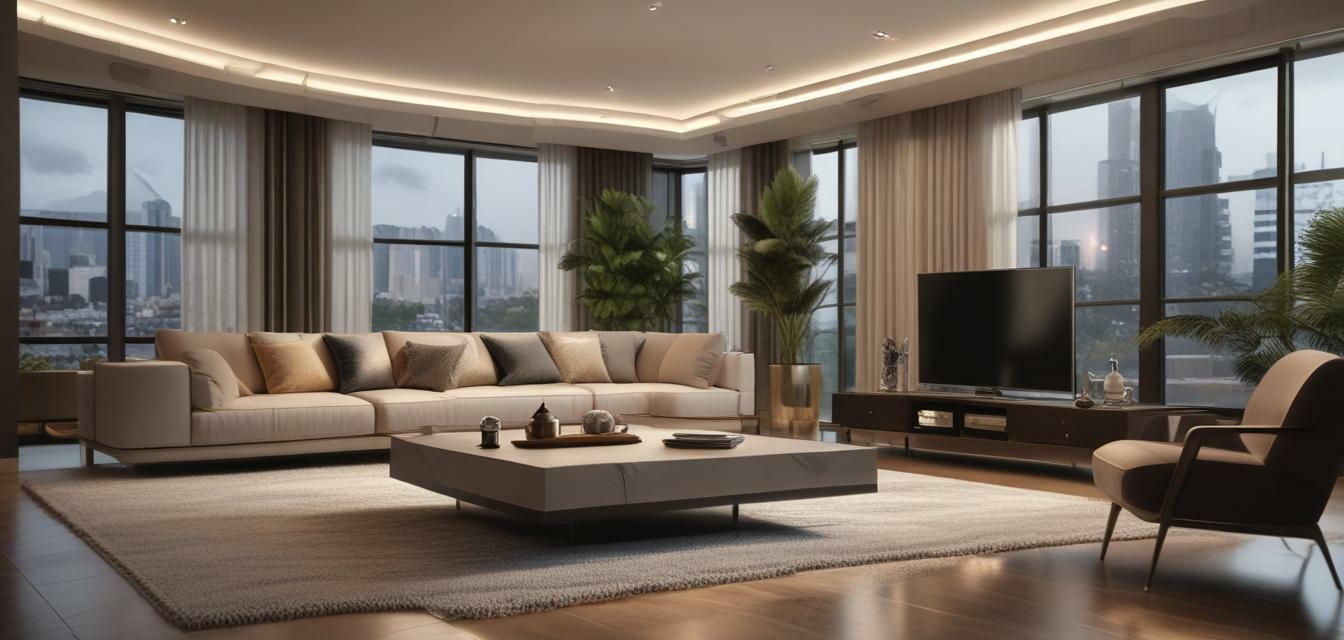
The Ultimate Guide to Luxury Smart Home Devices
Key Takeaways
- Smart home devices provide both convenience and luxury for modern homes.
- Integration among devices is crucial for seamless operation.
- High-end options often offer superior design and performance features.
- Choosing a reliable brand can enhance the overall smart home experience.
- Consider eco-friendly options for sustainable luxury living.
In today's fast-paced world, luxury isn't simply about opulence; it's also about convenience. Luxury smart home devices combine cutting-edge technology with elegant design, enhancing not only comfort but also the overall living experience. This guide will help you navigate the world of luxury smart home devices, highlighting essential features and considerations.
What are luxury smart home devices?
Luxury smart home devices are advanced technological tools designed to improve your home’s functionality, security, and energy efficiency while offering an aesthetically pleasing design. These devices encompass various categories, ensuring that all aspects of your home are enhanced through smart technology.
Categories of luxury smart home devices
- Smart lighting systems
- Home security and surveillance systems
- Smart thermostats
- Smart kitchen appliances
- Home automation hubs
Essential features to consider
When exploring luxury smart home devices, consider the following features:
| Feature | Description |
|---|---|
| Interconnectivity | Ability to connect and communicate seamlessly with other smart devices. |
| Remote Access | Control devices from anywhere using a smartphone or tablet. |
| Customization | Personalize settings and automations to suit individual lifestyle needs. |
| Security Features | Integrated security measures such as alerts and surveillance options. |
| Energy Efficiency | Save on energy costs with smart energy management features. |
Brands that stand out in luxury smart home devices
Certain brands are known for their commitment to quality and innovation in the luxury market.
- Brand A - High-end smart thermostats with precise climate control.
- Brand B - Designers of elegant smart lighting systems that enhance aesthetics.
- Brand C - Known for robust home security that integrates effortlessly into any home.
- Brand D - Offers a range of premium smart kitchen appliances for the modern chef.
- Brand E - Specializes in all-in-one smart home hubs that manage multiple devices.
Creating a luxurious smart home experience
To achieve a luxurious smart home, consider the following:
Tips for choosing luxury smart home devices
- Research compatibility with existing devices to ensure seamless integration.
- Invest in high-quality devices; cheaper options may compromise functionality.
- Read reviews and seek recommendations from trusted sources.
- Prioritize designs that match your home’s aesthetics.
- Consider devices that offer energy efficiency and sustainability features.
Best practices for installation and maintenance
Proper installation and maintenance are crucial for maximizing the benefits of your luxury smart home devices:
- Follow manufacturer instructions for initial setup to avoid complications.
- Schedule regular updates to ensure software is current.
- Monitor devices and settings for optimal performance.
- Consider professional installation for complex systems.
- Utilize customer support for troubleshooting and queries.
Conclusion
Luxury smart home devices are not just about technology; they embody a lifestyle choice that emphasizes convenience, security, and elegance. By selecting high-quality devices and integrating them thoughtfully, you can transform your home into a sanctuary of modern luxury. To learn more about the world of luxury items, check out our Luxury Buying Guides for insights on other high-end products.
Pros
- Enhanced comfort and convenience through automation.
- Improved energy efficiency, leading to cost savings.
- Increased home security with integrated systems.
- Customization options that fit unique lifestyle preferences.
Cons
- Higher upfront costs compared to standard devices.
- Possible integration challenges with existing technology.
- Dependence on internet connectivity for remote features.

